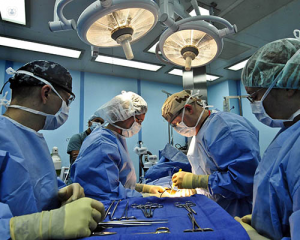Childbirth does not always go as planned. Despite the desire to deliver your child vaginally, in some cases this is not possible. Especially if the mother or the child is in pain, the labor is too long and there are complications. The medical staff then have an emergency caesarean with the help of cesarean section surgical instrument set.
For some women, a cesarean may also be a choice, taken before childbirth with the obstetrician-gynecologist: it is a scheduled cesarean. Among the causes of a scheduled cesarean section is the mother’s pelvis that is too narrow, the baby’s too high weight (macrosomia) or a twin pregnancy.
In France, caesarean sections are considered to affect 20.2% of births, according to figures from the French Federation of Perinatal Health Networks (FFRSP) in 2016. This surgical act leaves a mark on the body, like a memory of the birth of your baby. It’s a Caesarean scar. What is the care for this scar and will it go away? We take stock.
What is Cesarean?
A cesarean section is a surgical procedure to remove the fetus from the mother’s womb through an incision in the abdominal and uterine wall through cesarean section surgical instrument set. This not only affects the skin, but also the internal organs and your uterus.
How will the scar look?
The appearance of the caesarean scar depends on the incision made by the obstetrician-gynecologist. The incision will take place in the lower segment of your uterus, which is the part between the body and the cervix (which comes during pregnancy and then disappears). The incision can be made horizontally, vertically or in an inverted T, also called a segmental scar.
Usually, the doctor will do everything possible to make this scar as inconspicuous as possible. To close it, he / she can use staples or stitches, as well as absorbable threads or glue. The scars are usually 10 to 15 centimeters.
After childbirth, the caesarean scar will be red. It will then turn pink and then white over time. After one or two years (and depending on the care given), only a clear and fairly fine line will remain. The caesarean scar may also be swollen soon after childbirth and have scabs. Rest assured, this is normal. This is the healing process.
Giving birth by cesarean section is not trivial, remember that this is a surgical procedure, the skin needs time to heal and heal.
What care for a caesarean scar?
Until after the baby is born by cesarean section, you will have a bandage over your scar. It is particularly useful for preventing possible infections. In the maternity ward or in the hospital, a nurse or midwife will come to check the progress of healing, clean the wound and change the dressing.
The scar is quickly left in the open: the bandage will be removed after a few days after childbirth (or even after 24 hours!). You will then have surgical briefs (with mesh) to avoid friction. When you return from the maternity ward or hospital, it will be up to you to take care of your caesarean scar. Rest assured, the care is relatively simple, you just have to be regular.
This involves washing the scar thoroughly at least once a day with soap and water. Be careful, after a cesarean section, you must wait at least 3 days before being able to take a shower and 3 weeks before taking a bath (and even swimming in a swimming pool). Also, be sure to dry it well, with a hair dryer or handkerchief, patting gently, to prevent the fibers of a towel from getting stuck in the scar. Staples and threads are usually removed between the 5th and 10th day after cesarean section. The area around the scar may seem numb for the first few days, this is normal.
During the first months after giving birth, take care to protect your scar from the sun, in particular by applying a total screen before exposing yourself or covering it. Indeed, UV rays can cause an inflammatory reaction and / or the risk of having an unsightly pigmentation (and which unfortunately will not go away) in the scar. On a daily basis, to fade the scar, do not hesitate to massage it with repairing and healing creams, a very oily body or vegetable oil. You can also use natural methods, such as honey, karate butter, or lavender essential oil.
For more details, please visit: jimymedical.co.uk
 Universal Bloggers
Universal Bloggers




